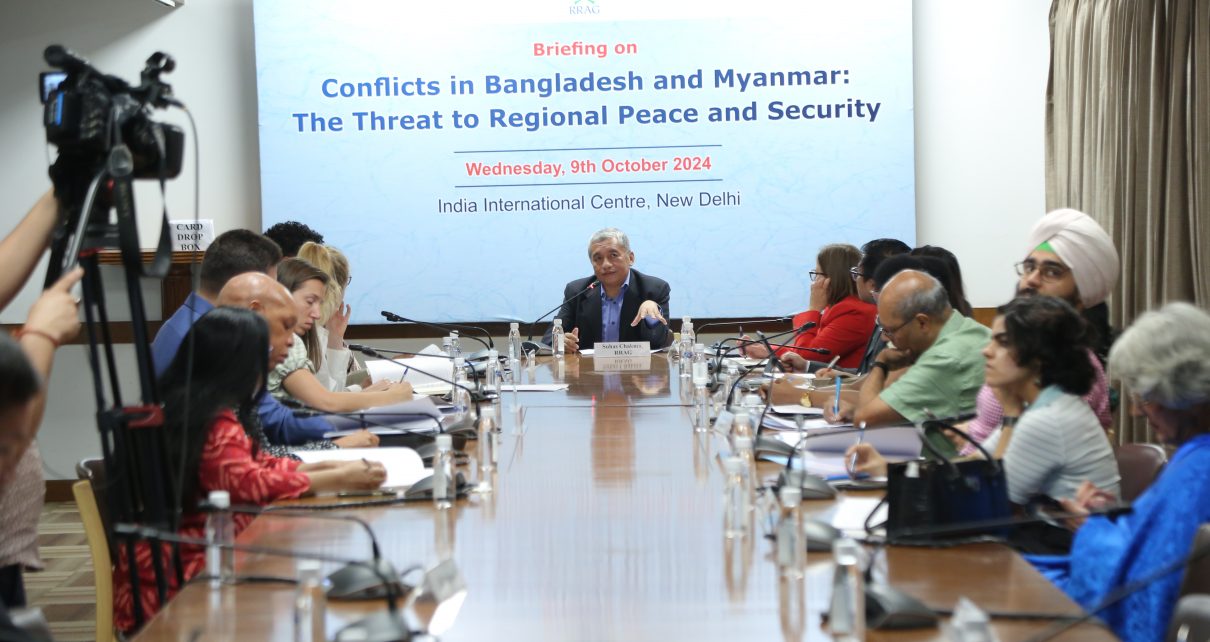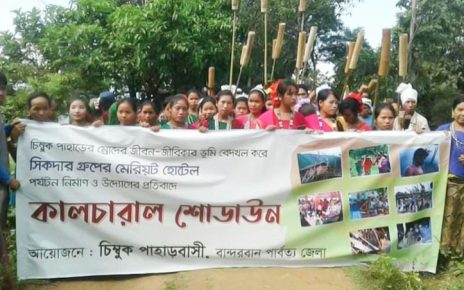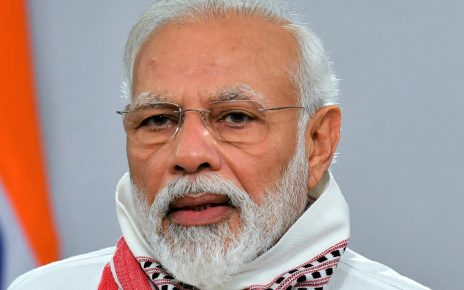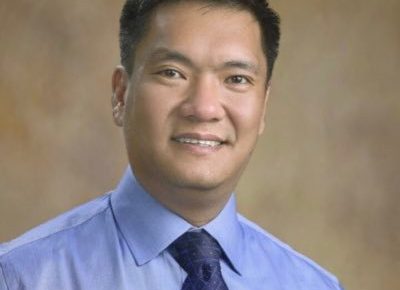Presentation by Suhas Chakma, Director of the Rights & Risks Analysis Group in a briefing for the diplomatic community and think-tanks on 09.10.2024 at India International Centre, New Delhi
The full report, “Conflicts In Bangladesh and Myanmar: The Threat To Regional Peace And Security” can be accessed here.
The oral presentation can be viewed here:
Before I present findings of our field visits in the Chittagong Hill Tracts (CHTs) of Bangladesh and Mizoram State of India and our perceptions on the emerging conflicts especially in the CHTs and Rakhine State, I want to make a few preliminary comments.
Firstly, as my “SURNAME”, Chakma, suggests, I belong to a community which resides in the North East of India, Chittagong Hill Tracts of Bangladesh and Rakhine State of Myanmar and Chakmas are known as the Daingnet in the Rakhine State. The key ethnic groups in Rakhine State are Rakhine/Marma, Kamein, Kwe Myi, Daingnet/Chakmas, Maramagyi, Mru and Thet. The key ethnic groups in the CHTs are Chakmas/ Daingnet, Rakhine/Marma, Tripuri, Tanchangya, Chak, Pankho, Mru, Bawm, Lushai, Khyang, and Khumi. I am not necessarily an expert on these areas but a subject matter of the experts or who can provide key inputs to the experts and the stakeholders of the experts. In a way, I am here to share essentially the same input.
Secondly, we were not supposed to have such a briefing when we set out our field research in June 2024 which specifically focused on, what I call ethnic cleansing of a very microscopic community in the Chittagong Hill Tracts i.e. Bawms, belonging to the Chin Kukui communi whose 26% of the 13,0000 populations are either in refugee camps in India or in prisons in Bangladesh. Their organizations were accused of connections with Islamic terrorist organizations in Bangladesh and bank robberies. We wanted to examine these issues. This was under Prime Minister Hasina’s rule. We just thought a report would suffice.
Third, there has been unprecedented intensification of the conflicts in the Chittagong Hill Tracts from 19 September 2024 onwards and the situation is deteriorating by day by day with the region at present closed to the tourists from Bangladesh itself from yesterday, 8October.
However, we sent the invitations out for this briefing on ““Conflicts In Bangladesh and Myanmar: The Threat To Regional Peace And Security” on 1st October, we were not sure whether there would be any interest. Whether Bangladesh could be clubbed with Myanmar? More importantly, Dr Yunus, the head of the Interim Govt is known all over the world as a Noble Laureate, that too for peace. This is a government which has Ministers from the civil society groups and this is the only government in the world on which I can claim to know a few Ministers for having worked quite closely on human rights issues in the region for the last 30 years, fought for their rights under Hasina and many of them have credibility both in the society and international community. Therefore, criticisms have to be couched properly. More importantly, Dr Yunus’s actual world view on rights and governance issues is not known but he uses the appropriate lingua franca
I think the two developments since 1st October made this briefing easier.
First, on 2nd October 2024, in an interview to the Voice of America on the sidelines of the UN General Assembly, on the Chittagong Hill Tracts (CHTs) had stated:
“We just got here. It’s not right to hope that a problem that has been there for so long can be solved in a couple of days. There was a peace accord; it happened after trying for many years. That accord is not being implemented; whether or not a new peace accord must be made, our government won’t be able to accomplish that. Elected governments later on will be able to take that on”.[1]
Here is the head of the government, Dr Yunus, who is reforming everything in the country i.e. elections system, police administration, judiciary, anti-corruption commission, public administration, and the constitution but when it comes to the Chittagong Hill Tracts, the most threatened and marginalized, he states that the elected governments later on will address the issue; he will remain in power till the elections are held after the end of the reform process, time period for which is not known.
On 6th October, the Interim Government appointed members of all these Six Committees – not a single member from 1.6 million indigenous peoples and 16 million religious minorities was included in any of these communities including the Constitution Reform Committee[2]. The exclusion is absolute; and unseen in Bangladesh both under President Ershad, Begum Khaleda Zia and Sheikh Hasina.
The exclusion of the indigenous peoples and religious minorities is the worldview of the Noble Laureate Dr Yunus. This world view of Dr Yunus in a way might give credence to our findings and observations being presented in this briefing.
There is no dispute about the status of the civil war in Myanmar. The powerful junta has virtually collapsed in most parts of the country after 76 years since the country’s independence in 1948. It is unlikely to recapture the territories lost to the National Unity Government (NUG) and various insurgent groups in the country. Peace will remain elusive and the diplomatic talks on Myanmar’s civil war being held in Jakarta tomorrow ahead of the ASEAN summit in Laos are unlikely to make any headway.[3] Junta still has superior firepower and access to a lot of exportable resources, such as timber, jade, gems, fish etc. Even if more Proto States like the Arakan emerge, the junta is unlikely to give up power to pave the way for democracy. Myanmar as a failed State will remain for a long period of time and implications of the war in Myanmar will be felt in a decade.
In our considered view, Bangladesh is showing signs of a potential civil war. It is not because of Bangladesh has been the Vendetta Republic. Former Prime Minister Sheikh Hasina effectively sought to establish one party rule. The Interim Government proposed amendment to the International Crimes (Tribunals) Act, 1973 to ban a political party for up to 10 years for committing crimes against humanity and genocide.[4] The Awami League is the only political party which remains accused as a political party for committing crimes against humanity. The Awami League led 14-party alliance from the dialogue on reform process.[5] Notwithstanding Prime Minister’s Hasina human rights records, the fact remains Awami League is one of the largest political parties and it has the potential to face civil war because Dr Yunus missed the opportunity because of his worldview on rights and democracy.
More pertinently, both State and non-state actors in these two countries have been engaged in ethnic cleansing of the communities distinctly different from the majority i.e. Rohingyas in the Rakhine State province of Myanmar and non-Muslim indigenous hill tribes in the Chittagong Hill Tracts (CHTs) of Bangladesh. Worse, the Bangladesh Army personnel encouraged settlement of the Rohingya refugees in the three hill districts of the CHTs, in particular, Bandarban district both to reduce indigenous peoples a minority on their lands and to provide strategic support to the Rohingyas in the Rakhine state.
The Arakan Army (AA) taking control of almost the entire Rakhine State has not necessarily indicated any resolution of the Rohingya crisis in the future. On 5 August 2024, artillery shelling and drone attacks reportedly killed about 180 Rohingyas, dispelling any hope for resolution of the Rohingya crisis in the future Rakhine State.[6]
On the other hand, the Bangladesh Army, given the focus of the international community on the political conflicts in mainland Bangladesh following the fall of Prime Minister Sheikh Hasina government on 5 August 2024[7], decided to intensify its attacks on indigenous peoples of the CHTs. From 1970s, it had deployed about one third of its armed forces in the CHTs inhabited by about 1% of the total population of the country.[8] Furthermore, the military rulers of the country settled over 400,000 illegal[9] plain settlers from mainland Bangladesh into the CHTs from 1979 to 1983 with the aim to reduce indigenous peoples into a minority on their own land.[10] The government of Bangladesh provided inducement in the form of free rations and lands grabbed from indigenous peoples. Even today, the government of Bangladesh provides free rations to 24,511 families in Khagrachari district and 1,486 families in Rangamati district while[11] the support to the illegal settlers’ families in Bandarban district are directly dealt by the Bangladesh Army given its strategic interests with the Rakhine state. This sustains the conflict in the CHTs.
From 19 September to 1 October 2024, the illegal plain settlers and Bangladesh Army led organized assaults on indigenous peoples in Dighinala and Khagrachari Sadar under Khagrachari district on 19 September, followed by further attacks on Rangamati Sadar on 20 September 2024 and Khagrachari district on 1 October 2024 after an illegal settler was murdered by his own community fellows. The Bangladesh Army and the illegal settlers specifically targeted shops and other business establishments of indigenous peoples in the towns. The number of indigenous people killed in these attacks could not be confirmed and varied from four to nine persons, while the RRAG was provided with a list of 75 indigenous people who sustained injuries, and 142 houses, shops and other business establishments, properties, Buddhist temples that were looted, destroyed and set ablaze.[12] Following these attacks, across the CHTs, the hill tribes have effectively been expelled from the Upazila/Sub District and District markets dominated by the illegal plain settlers. Indigenous peoples have been effectively barred from participation in economic activities in urban areas of the CHTs because of the segregation, communal tensions and the partisan law enforcement agencies and the administration.
The latest attacks followed the successful ethnic cleansing of the indigenous Bawm people. In October 2022 Bangladesh Army launched attacks on the Christian Bawms who belong to the Kuki-Chin-Mizo ethnic group for alleged links of the Kuki-Chin National Front (KNF) with the Islamic militants[13]. Further, in what appears to be an orchestrated bank robbery at Bandarban in April 2024, Bangladesh Army effectively implicated the entire Bawm community in the bank robbery. At present, out of the 13,000 Bawm populations in the CHTs, about 3,500 have already fled to Mizoram State of India, while about 144 Bawms faced arbitrary arrest and detention, in addition to 13 Bawms being extrajudicially executed in the bank robbery cases.[14] The entire Bawm populations have been terrorised and their lands are up for settlement by the illegal plain settlers and the Rohingyas.
Among all the provinces of Myanmar, only Rakhine State has international dimension because of the Rohingya crisis and common ancestry of the Rakhines with the indigenous hill tribes in the CHTs. Notwithstanding sub-nationalism among indigenous peoples, researchers of the RRAG during their field visits to the CHTs and Mizoram[15] found traction towards violent extremism, if not rejuvenated romanticism with the armed movement in the light of the fall of the Myanmar’s powerful junta.
Wider conflicts remain within the realm of possibilities with the emergence of the Rakhine province as a proto State on one hand, and the Bangladesh Army forcing indigenous peoples to the edges by weeding out indigenous peoples from their lands and thereafter, implanting Rohingya refugees and illegal plain settlers. On the Rohingya refugees, the true picture is not presented by the Government of Bangladesh or UNHCR. As per UNHCR, there were 994,124 Rohingya refugees in the camps as on 31 August 2024.[16] This figure is economical with the truth about the number of Rohingyas in the country. The Refugee Relief and Repatriation Commissioner, Ministry of Disaster Management and Relief, Government of Bangladesh, there were 1,118,576 biometrically documented Rohingya refugees as on 15 July 2019 and 7,41,841 Rohingyas who sought refuge from 25 August 2017 to 14 July 2017.[17] The UNHCR data further provided that as on 31 July 2019 there were 3,44,188 Rohingya children below 12 years i.e. those who were not biometrically documented for being below 12 years.[18] This implies that there were about 14,62,764 Rohingya refugees as on 31 July 2019 i.e. 1,118,576 biometrically documented Rohingya refugees and 3,44,188 Rohingya children below 12 years. On 19 August 2019, UNHCR stated 91,000 children being born in Rohingya refugee camps from August 2017 to August 2019 i.e. about 45,000 per year.[19] However, the same UNHCR data shows that in December 2018, the total Rohingya refugees in the camps stood at 906,572 persons[20] but by December 2019, it had decreased to 854,704 persons[21], indicating a drop of 51,868 individual refugees in one year. In September 2023, Bangladeshi media reported that more than 300,000 Rohingyas had fled the refugee camps in the last six years and settled in many areas including the CHTs. This figure of 3,00,000 Rohingya appears to be conservative considering the presence of over 1.5 million Rohingyas in the country and less than a million of them living inside the camps.
The Arakan Rohingya Salvation Army (ARSA) and many of the Islamist terror groups openly operate in Bandarban district.[22] The fall of Prime Minister Sheikh Hasina is most likely to embolden these elements. Furthermore, if past practices of abandoning refugees by the international community[23] are considered, it is likely that support for the Rohingya refugees will be withdrawn or significantly reduced. The explosion of a million plus Rohingya refugees from the camps at Cox’s Bazaar will be felt beyond Bangladesh and South Asia.
We need to see the larger picture. On 4 October 2024, Aljazeera wrote on the conflict in Arakan:
“Ko Htun, a community worker from Rakhine State’s Daingnet community, also known as Chakmas, said that relations are generally positive between his community and the ULA/AA, but that he would like to see the ethnic armed organisation provide more public services. “As far as I know, the AA is taking steps to ensure inclusivity, but most of the time, people have to deal with their livelihoods and difficulties on their own”.[24]
The Proto State Arakan is ensuring inclusivity but the receipient of the Noble Laureate for Peace, Dr Yunus has washed his hands off on the CHTs and further absolutely excluded indigenous peoples and religious minorities from any reform process after the fall of Prime Minister Hasina. This absolute exclusion of the indigenous peoples from the current reform process is a recipe for further conflicts in the future. And the situation in the CHTs has been deteriorating alarmingly. On 6 October 2024, the Bangladesh government banned entry of tourists into the CHTs from 8 to 31 October citing unidentified “unavoidable grounds”.[25] On 6 October 2024, the indigenous Buddhist monks in the CHTs also for the first time in their history announced their decision to not celebrate Kathin Chibar Dan, one of the largest annual religious festivals of the Buddhist community, held after rain retreat of the monks, all over the world.[26]
While security will be provided for the Durga Pujas of the Hindu minorities, the attacks against Hindu minorities are expected to intensify once the election processes are announced by the Interim Government. Political violence shall be used as an excuse – to expel the Hindu minorities just the way murder of Mohammed Mamun by the settlers has been used to unleash attacks on the indigenous peoples in the CHTs.
India is expected to see massive migration of both indigenous peoples and minorities from Bangladesh, disturbing peace and security in its volatile North Eastern region. At present, hill tribes are unable to travel to the plain areas; they face acts of violence in public space. Thousands of hill people working in the Export Processing Zones around Dhaka and Chittagong are leaving and returning to their homes in the CHTs for safety. But the home itself is not safe.
These peripheries, Rakhine State and the CHTs, seldom figured in the policies of the international community relating to Bangladesh or Myanmar. As both Bangladesh and Myanmar appear unwilling to ensure national reconciliation and accommodate minorities and indigenous peoples, the Rakhine State and the CHTs can become the hotspots of new conflict. The emergence Rakhine as a proto State is reminder as to how exclusion can lead to violent conflicts.
The international community has lined up to provide support to the Interim Government. The funds committed so far are US$ 199 million for Rohingya refugees[27] and US$ 202 million for inclusive economic growth, good governance, social, human, & economic opportunity, and resilience from the US Agency for International Development; [28] US$ 2.3 billion to support reform, flood response, better air quality and health from the World Bank;[29] €12 million for border security, border management and building human and institutional capacity from the European Union;[30] US$ 50 million from the ADB;[31] US$ 5 billion from Islamic Development Bank for the three years and €1 billion in the next 10 years including €15 million this year from Germany.[32] Further, US$ 3 billion loan has been sought from the IMF.[33]
International community in order to prevent wider conflicts ought to ensure that Dr Mohammed Yunus’s government does not follow the act of the junta in Myanmar with respect to the minorities and indigenous peoples. While the civil war in Myanmar makes any intervention beyond humanitarian assistance difficult, Bangladesh still provides an opportunity for necessary intervention for conflict prevention.
The RRAG recommends the following to the international community, in particular donors, for interventions with the Government of Bangladesh:
- Ensure recognition of the rights of the indigenous peoples and religious minorities in the proposed new constitution of Bangladesh;
- Provide constitutional recognition to the CHTs Regional Council Act and Hill District Council Acts of Khagrachari, Rangamati and Bandarban districts in the proposed new constitution of Bangladesh;
- Prohibit settlement of illegal plain settlers and the Rohingya refugees into the Chittagong Hill Tracts of Bangladesh;
- Stop free food supplies to the illegal settlers families in the Chittagong Hill Tracts that sustains the conflict;
- Provide financial support to the Government of Bangladesh to repatriate illegal plain settlers settled in the CHTs violations of the CHTs 1900 Regulation to the plain areas;
- Establish an office of the High Commissioner for Human Rights in Bangladesh and extend the mandate of the OHCHR to enable it to investigate beyond 20 August 2024 and upto 1October 2024; and
- Organise an international conference of the Rohingya refugee recipient countries for resolution to the Rohingya crisis. [Ends]
[1]. ‘Interim govt to decide its term, The Daily Star, 2October 2024, https://www.thedailystar.net/news/bangladesh/diplomacy/news/interim-govt-decide-its-term-3717261
[2]. 9-member constitution reform commission announced, The Dhaka Tribune, 7 October 2024, https://www.dhakatribune.com/bangladesh/361122/9-member-constitution-reform-commission-announced
[3]. Indonesia to Host Discussions on Myanmar Conflict: Diplomat, The Irrawaddy, 5 October 2024, https://www.irrawaddy.com/news/myanmars-crisis-the-world/indonesia-to-host-discussions-on-myanmar-conflict-diplomat.html
[4]. ICT Act amendment: Draft proposes banning political parties up to 10yrs, The Daily Star, 24 September 2024, https://www.thedailystar.net/news/bangladesh/news/ict-act-amendment-draft-proposes-banning-political-parties-10yrs-3710501
[5]. Interim govt begins dialogue with political parties today, Prothom Alo, 5 October 2024, https://en.prothomalo.com/bangladesh/j2h8ksi7e2
[6]. Seven years after forced mass displacement of Rohingya from Myanmar, deadly attacks on children continue in Rakhine State, UNICEF, 24 August 2024, https://www.unicef.org/press-releases/seven-years-after-forced-mass-displacement-rohingya-myanmar-deadly-attacks-children#:~:text=On%205%20August%202024%2C%20artillery,they%20attempted%20to%20escape%20hostilities.
[7]. Euphoria in Bangladesh after PM Sheikh Hasina flees country, BBC, 6 August 2024, https://www.bbc.com/news/articles/clywww69p2vo
[8]. Bangladesh: Militarization in the Chittagong Hill Tracts, The Slow Demise of the Region’s Indigenous Peoples, IWGIA Report 14, 2012, https://www.iwgia.org/en/resources/publications/308-human-rights-reports/3076-bangladesh-militarization-in-the-chittagong-hill-tracts-the-slow-demise-of-the-regions-indigenous-peoples-iwgia-report-14.html
[9]. The settlement of the plains people in the Chittagong Hill Tracts is illegal as Article 52 of the CHTs 1900 Regulation brought by the British India prohibits settlement of outsiders. Article 52 of the CHTs 1900 Regulation relating to Immigration into the Hill Tracts provides that “a) Save as hereinafter provided, no person other a Chakma, Mogh or a member of any hill tribe indigenous to the Chittagong Hill Tracts, the Lushai Hill, the Arakan Hill Tracts, or the State of Tripura shall enter or reside within the Chittagong Hill Tracts unless he is in possession of a permit granted by the Deputy Commissioner at his discretion. …d) No permit shall be valid for more than twelve months from the date of its grant. Every person required by this rule to be in possession of a permit shall be bound to produce it on the demand of any Government officer, headman, Karbari or Bazar Chaudhuri, and on his failure to produce such permit such government officer, headman, Karbari or Bazar Choudhuri shall arrest him and forward him without delay to the nearest police officer or Magistrate.”
[10]. “Life is not Ours”, P. 52, The Report of the Chittagong Hill Tracts Commission, May 1991, http://www.iwgia.org/iwgia_files_publications_files/0129_Life_is_not_ours_1-108.pdf
[11]. Please see ANNEX-1 of the report, Conflicts In Bangladesh and Myanmar: The Threat To Regional Peace And Security, 9 October 2024, www.rightsrisks.org
[12]. Please see Annex-3 of the report, Conflicts In Bangladesh and Myanmar: The Threat To Regional Peace And Security, 9 October 2024, www.rightsrisks.org
[13]. Caught in the Crossfire: The Plight of the Bawm Community and Unveiling the Complex Ties Between the Bangladesh Military and the Kuki-Chin National Front, International Work Group for Indigenous Affairs (IWGIA), 9 September 2024, https://www.iwgia.org/en/news/5554-caught-crossifre-bawm-complex-ties-between-bangladesh-military-kuki-chin-national-front.html
[14]. Please see ANNEX-2 of the report, Conflicts In Bangladesh and Myanmar: The Threat To Regional Peace And Security, 9 October 2024, www.rightsrisks.org
[15]. The RRAG researchers visited the CHTs and Mizoram in June 2024
[16]. Please see Annex 4 of the report, Conflicts In Bangladesh and Myanmar: The Threat To Regional Peace And Security, 9 October 2024, www.rightsrisks.org
[17]. Report at a glance, Refugee Relief and Repatriation Commissioner, Government of Bangladesh dated 15 July 2019, http://rrrc.gov.bd/sites/default/files/files/rrrc.portal.gov.bd/download/a35745fe_4119_4d68_ba5c_f91bb0fb392f/Report%20At%20a%20glance%2015-07-2019.pdf
[18]. Population Factsheet : UNHCR, Bangladesh, Cox’s Bazar- as of 31 July 2019, https://data2.unhcr.org/en/documents/details/70585
[19]. Rohingya crisis: Population exploding as 91,000 babies are born in two years, Dhaka Tribune, 29 August 2019, https://www.dhakatribune.com/bangladesh/rohingya-crisis/2019/08/29/rohingya-crisis-population-exploding-as-91-000-babies-are-born-in-two-years
[20]. Please see Annex-7 of the report, Conflicts In Bangladesh and Myanmar: The Threat To Regional Peace And Security, 9 October 2024, www.rightsrisks.org
[21]. Please see Annex-8 of the report, Conflicts In Bangladesh and Myanmar: The Threat To Regional Peace And Security, 9 October 2024, www.rightsrisks.org
[22]. Are militants in control of Rohingya refugee camps?, DW News, 24 September 2019, https://www.youtube.com/watch?v=ATloYqmHyp0
[23]. International community often left the refugees to fend themselves whether Vietnamese boat people, Afghan refugees in Pakistan, Bhutanese refugees in Nepal or Rohingya refugees in Bangladesh prior to 2017
[24]. ‘Like we are trapped’: Minorities suffer amid conflict in Myanmar’s Rakhine, Aljazeera, 4 October 2024, https://www.aljazeera.com/news/2024/10/4/like-we-are-trapped-minorities-suffer-amid-conflict-in-myanmars-rakhine
[25]. Bangladesh restricts tourism in southeastern hills amid unease calmness, The Indian Express, 7 October 2024, https://indianexpress.com/article/news-today/bangladesh-restricts-tourism-in-southeastern-hills-amid-unease-calmness-9607246/
[26]. Bangladesh: Indigenous Buddhist will not celebrate Katin Chibar Dan festival for security concerns, The Borderlens, 6 October 2024, https://www.borderlens.com/2024/10/06/bangladesh-indigenous-buddhist-will-not-celebrate-katin-chibar-dan-festival-for-security-concerns/
[27]. The United States Announces Nearly $199 Million in Additional Humanitarian Assistance for the Rohingya Refugee Crisis, USAID, Tuesday, 24 September 2024,
[28] . Ibid
[29]. World Bank pledges additional $2 bn to support critical reforms in B’desh, The Business Standard, 17 September 2024, https://www.business-standard.com/world-news/world-bank-pledges-additional-2-bn-to-support-critical-reforms-in-b-desh-124091700759_1.html
[30]. EU releases €1.1 million emergency assistance for flood victims in Bangladesh, European Commission, 5 September 2024, https://civil-protection-humanitarian-aid.ec.europa.eu/news-stories/news/eu-releases-eu11-million-emergency-assistance-flood-victims-bangladesh-2024-09-05_en#:~:text=This%20funding%20complements%20the%20ongoing,assistance%20to%20Bangladesh%20in%202024.
[31]. ADB Approves $50 Million to Finance PPP Projects in Bangladesh, Asian Development Bank, 18 August 2020, https://www.adb.org/news/adb-approves-50-million-finance-ppp-projects-bangladesh
[32]. WB commits $2b more in FY25, Islamic Dev Bank $5b in three years, The Business Standard, 17 September 2024, https://www.tbsnews.net/bangladesh/isdb-provide-4b-5b-bangladesh-next-3-years-under-mcps-943511
[33]. IMF says it is ‘fully committed’ to Bangladesh after protests oust PM, Reuters, 6
August 2024, https://www.reuters.com/world/asia-pacific/imf-says-it-is-fully-committed-bangladesh-after-protests-oust-pm-2024-08-06/



